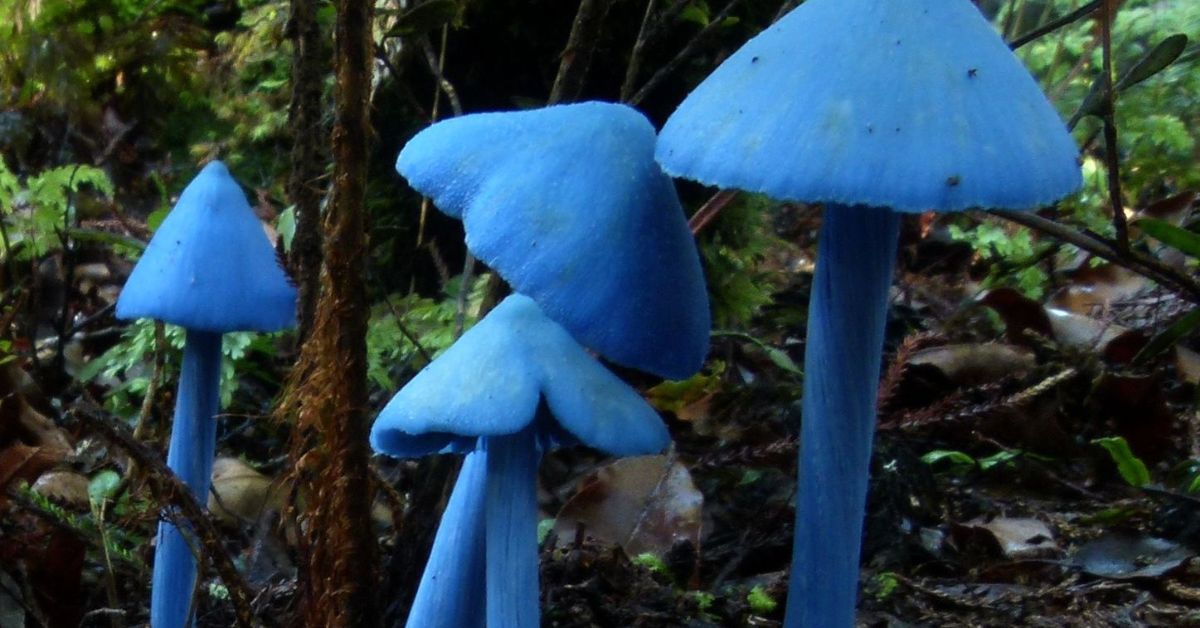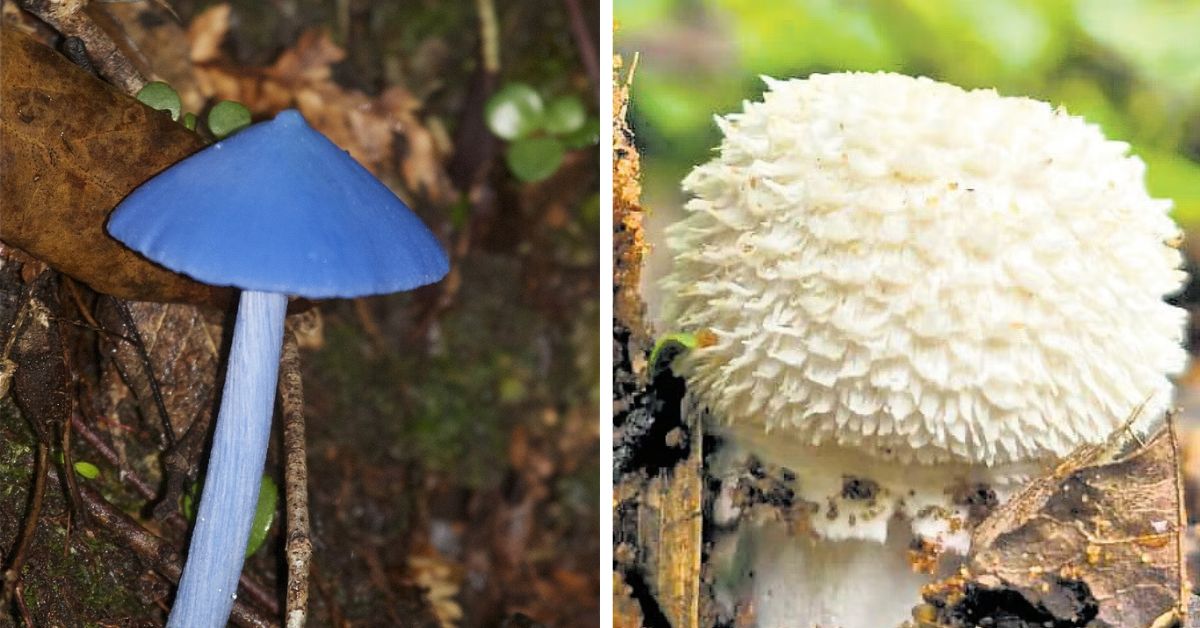Feature image courtesy The New Indian Express
In the cool, damp hush of Telangana’s monsoon forests, colour is everywhere — the glossy green of fresh leaves, the red of wet soil, the yellow flicker of a bird’s wing. But this season, something else has caught the forest’s light. Something unexpected.
A flash of impossible blue lay nestled among the leaf litter in Komaram Bheem Asifabad, catching the eye of forest staff. With its indigo-blue cap and pale gills shimmering in the morning mist, the blue pinkgill (Entoloma hochstetteri) is a mushroom so rare in India that, until recently, it was mostly known from faraway New Zealand — with just a few earlier records here, including one in Odisha in 1989.
And in Kawal Tiger Reserve’s Kaddampeddur range, another wonder appeared — the shuttlecock mushroom (Clathrus delicatus), rising like a tiny feathered crown from the forest floor, its cage-like form a natural sculpture.
These are not common roadside finds. They are small marvels, spotted only because forest staff and researchers were paying close attention, with cameras and notebooks ready.
Why these finds matter
Most of us know mushrooms as the quiet recyclers of the forest, turning fallen wood and leaves into rich soil. They rarely demand notice. But these two species refuse to hide.
- The blue pinkgill’s colour comes from azulene, a naturally occurring blue pigment also found in some flowers and plants, but rare in fungi. It’s what gives the mushroom its almost unreal shade of blue.
- The shuttlecock mushroom’s lattice — a crisscross, net-like structure — is not for beauty alone; it helps the fungus release its spores efficiently into the air.

For mycologists — scientists who study fungi — their arrival here sparks important questions. Have they always been here, appearing only in certain seasons? Or are shifts in climate and habitat allowing them to grow in new ranges?
The journey to the discovery
The blue pinkgill was recorded in the moist, shaded reserve forest of the Kagaznagar division, where decaying wood creates the perfect nursery.
The shuttlecock mushroom emerged in Kawal Tiger Reserve, a known biodiversity hotspot — but until now, never home to this species.
Both finds were carefully documented: photographs, location coordinates, and habitat notes. Each detail matters, because in science, a sighting without records is just a story.
More than a pretty find
These mushrooms are fragile messengers. They speak of the health of the forest floor, the unseen exchanges of nutrients, and the silent work of decomposition that keeps ecosystems alive.

Some related fungi have medicinal or biochemical uses, and the blue pinkgill’s pigments are being explored as a natural food dye. Researchers believe it may also form partnerships with plant roots to support forest ecosystems — but in India, these species remain largely unstudied.
That’s why they should be photographed, not picked.
What this means for you
If you walk the woods this monsoon, look down as often as you look up. If you see something unusual:
- Photograph it
- Note where and when you saw it
- Share it with local forest departments or nature groups
Every such sighting adds another thread to the map of India’s biodiversity — a map still missing far too many details.
The blue pinkgill and shuttlecock mushroom may be small, but their arrival is big news. They are proof that even in forests we think we know, there are still miracles waiting at our feet.
And perhaps that’s the forest’s greatest gift — the reminder that discovery is not only in the grand or the rare, but in simply noticing what blooms quietly, waiting to be seen.
No comments:
Post a Comment